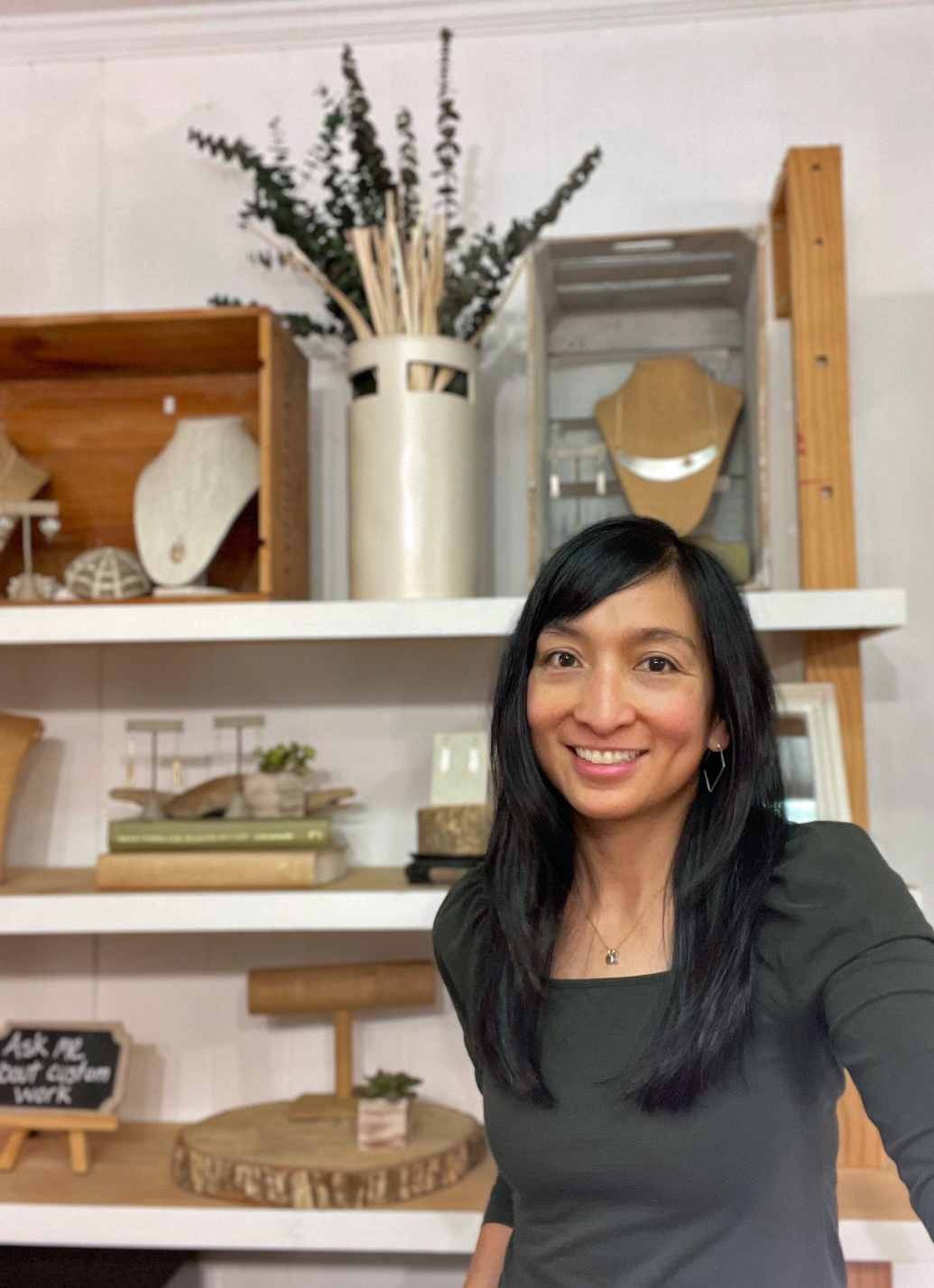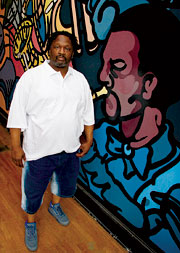
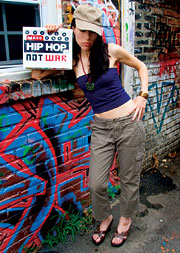
Distinct (though tricky to explain) hip-hop style may not be the most prevalent manner of dress on Asheville’s streets, but with breakers, MCs and DJs showcasing their talents around town, the apparel is part of the scene.
Hip-hop fashion emerged in the late 1970s and early ‘80s with brand-name sportswear and bold accessories. African influences and sporty sneakers infiltrated the look by the following decade, as did high-end designer pieces and luxe additions of fur, leather, gold and silver. Gangsta-wear of the ‘90s brought black clothing, baggy jeans and street savvy still seen in hip-hop wear today. However, dancers and MCs customize their looks to represent individual tastes, beliefs and interests.
Urban wear, represented by local boutique The Block, is inspired by the streets of New York. B-Girl style, shown in these photos, allows dancers to move fluidly while flashing fashion sense: an important element of hip-hop culture.
Photos by Jonathan Welch.
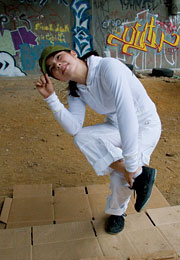
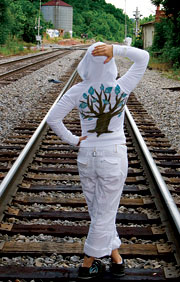
• Kimi Lager, a dancer with Hunab Kru, poses in dance-wear. The appliqué on Kimi’s hoodie is her own artwork.
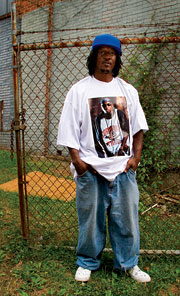
• Nick B poses in apparel from The Block.



